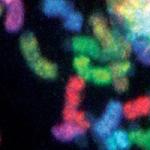
Research Topics
Telomeres are chromosome end capping structures that prevent chromosome termini from being recognized as broken DNA ends. Telomere shortening is a hallmark of aging and associated with a number of age-related pathologies. Dr. Liu’s laboratory investigates the hypothesis that oxidative lesions and inadequate DNA structural resolution would impact telomere maintenance and function and explores alternative mechanisms for how telomere loss contributes to short telomere syndromes and age-associated organ decline and pathologies. Using a combination of molecular, genetic, and biochemical approaches, Dr. Liu is interested in probing (1) the key genes that modulate oxidative DNA lesions and unique DNA secondary structures at telomeres; (2) the effect of telomere maintenance deficiency on human diseases of accelerated aging and cancers; and 3) the molecular pathways that underlie the role of mitochondrial impairment upon telomere dysfunction, and its relevance to the telomere loss/dysfunction-mediated pathophysiology (or telomeropathy). These studies will enhance our understanding of how DNA lesions and structure resolution deficiencies and alternative mechanisms affect telomere maintenance and thus aging and related human diseases.
Biography
Dr. Yie Liu received her Ph.D. at Karolinska Institute, Sweden and then joined the University of Toronto as a postdoctoral fellow of the National Cancer Institute of Canada. She became a principal investigator at NIA since 2006.
Selected Publications
- Sun C, Wang K, Stock AJ, Gong Y, Demarest TG, Yang B, Giri N, Harrington L, Alter BP, Savage SA, Bohr VA, Liu Y. Re-equilibration of imbalanced NAD metabolism ameliorates the impact of telomere dysfunction. EMBO J. 2020;39(21):e103420.
- Kim J, Sun C, Tran AD, Chin PJ, Ruiz PD, Wang K, Gibbons RJ, Gamble MJ, Liu Y, Oberdoerffer P. The macroH2A1.2 histone variant links ATRX loss to alternative telomere lengthening. Nat Struct Mol Biol. 2019;26(3):213-219.
- Shi J, Yang XR, Ballew B, Rotunno M, Calista D, Fargnoli MC, Ghiorzo P, Bressac-de Paillerets B, Nagore E, Avril MF, Caporaso NE, McMaster ML, Cullen M, Wang Z, Zhang X, NCI DCEG Cancer Sequencing Working Group, NCI DCEG Cancer Genomics Research Laboratory, French Familial Melanoma Study Group, Bruno W, Pastorino L, Queirolo P, Banuls-Roca J, Garcia-Casado Z, Vaysse A, Mohamdi H, Riazalhosseini Y, Foglio M, Jouenne F, Hua X, Hyland PL, Yin J, Vallabhaneni H, Chai W, Minghetti P, Pellegrini C, Ravichandran S, Eggermont A, Lathrop M, Peris K, Scarra GB, Landi G, Savage SA, Sampson JN, He J, Yeager M, Goldin LR, Demenais F, Chanock SJ, Tucker MA, Goldstein AM, Liu Y, Landi MT. Rare missense variants in POT1 predispose to familial cutaneous malignant melanoma. Nat Genet. 2014;46(5):482-6.
- Wan B, Yin J, Horvath K, Sarkar J, Chen Y, Wu J, Wan K, Lu J, Gu P, Yu EY, Lue NF, Chang S, Liu Y, Lei M. SLX4 assembles a telomere maintenance toolkit by bridging multiple endonucleases with telomeres. Cell Rep. 2013;4(5):861-9.
- Stock AJ, McDevitt RA, Puligilla C, Wang Y, Zhang Y, Wang K, Sun C, Becker KG, Lehrmann E, Wood WH 3rd, Gong Y, Aqdas M, Sung MH, Hoffmann V, Liu C, Gorospe M, Harrington L, Ferrucci L, Liu Y. Aberrant expression and localization of the RAP1 shelterin protein contribute to age-related phenotypes. PLoS Genet. 2022;18(11):e1010506.
Related Scientific Focus Areas





Molecular Biology and Biochemistry
View additional Principal Investigators in Molecular Biology and Biochemistry
This page was last updated on Thursday, August 10, 2023